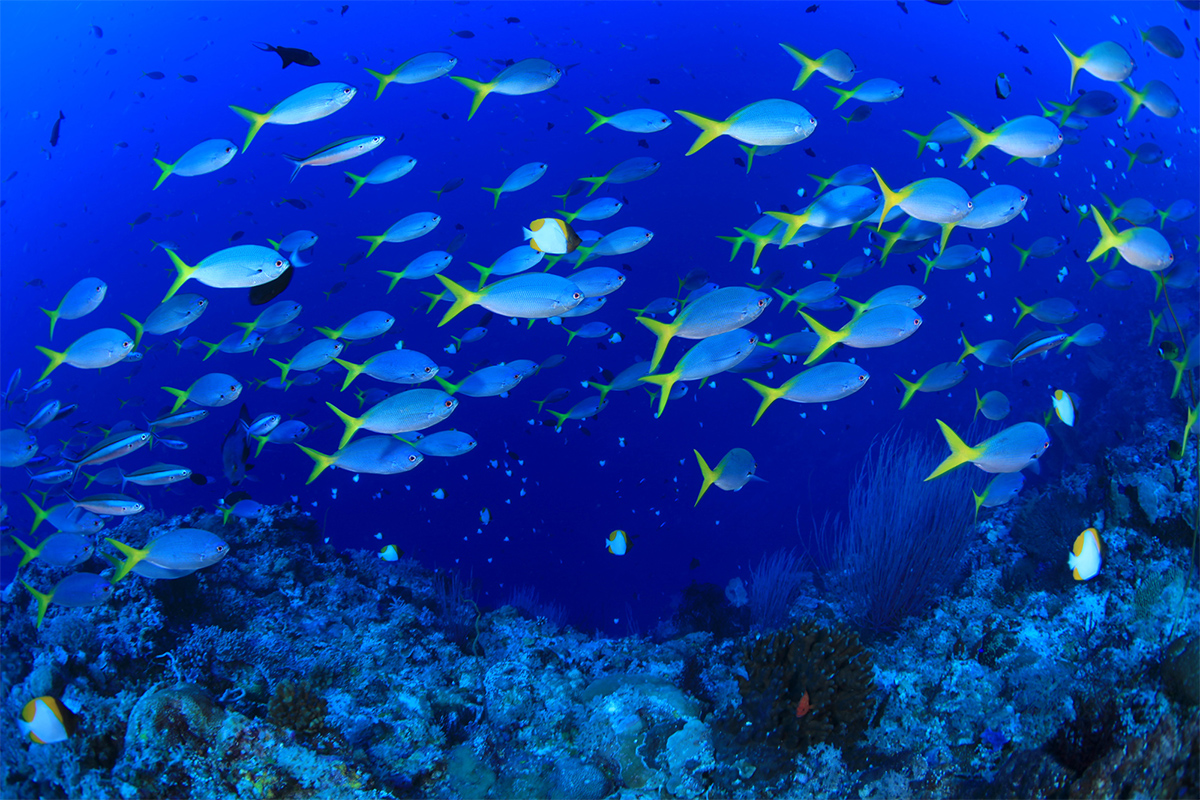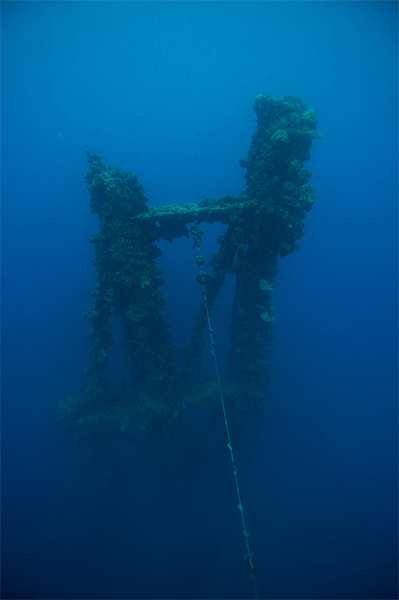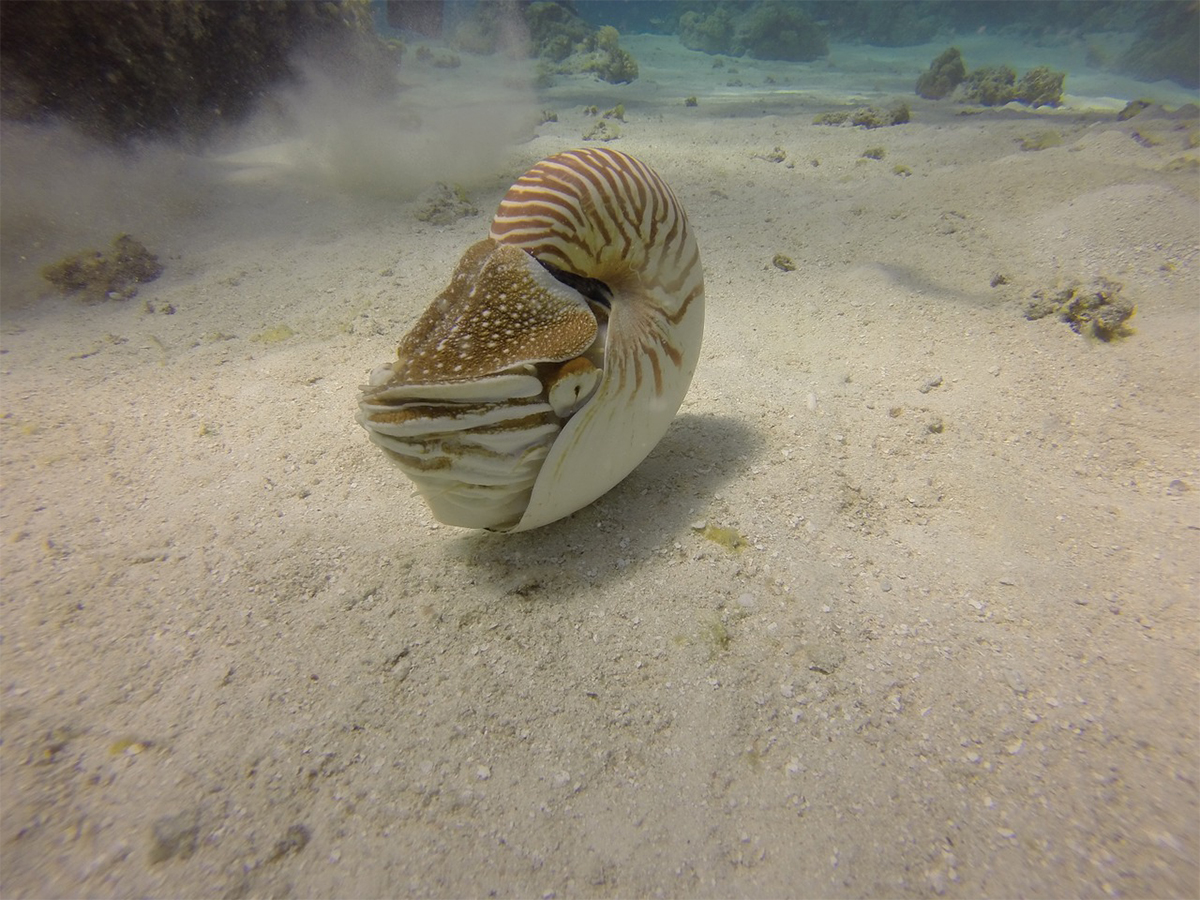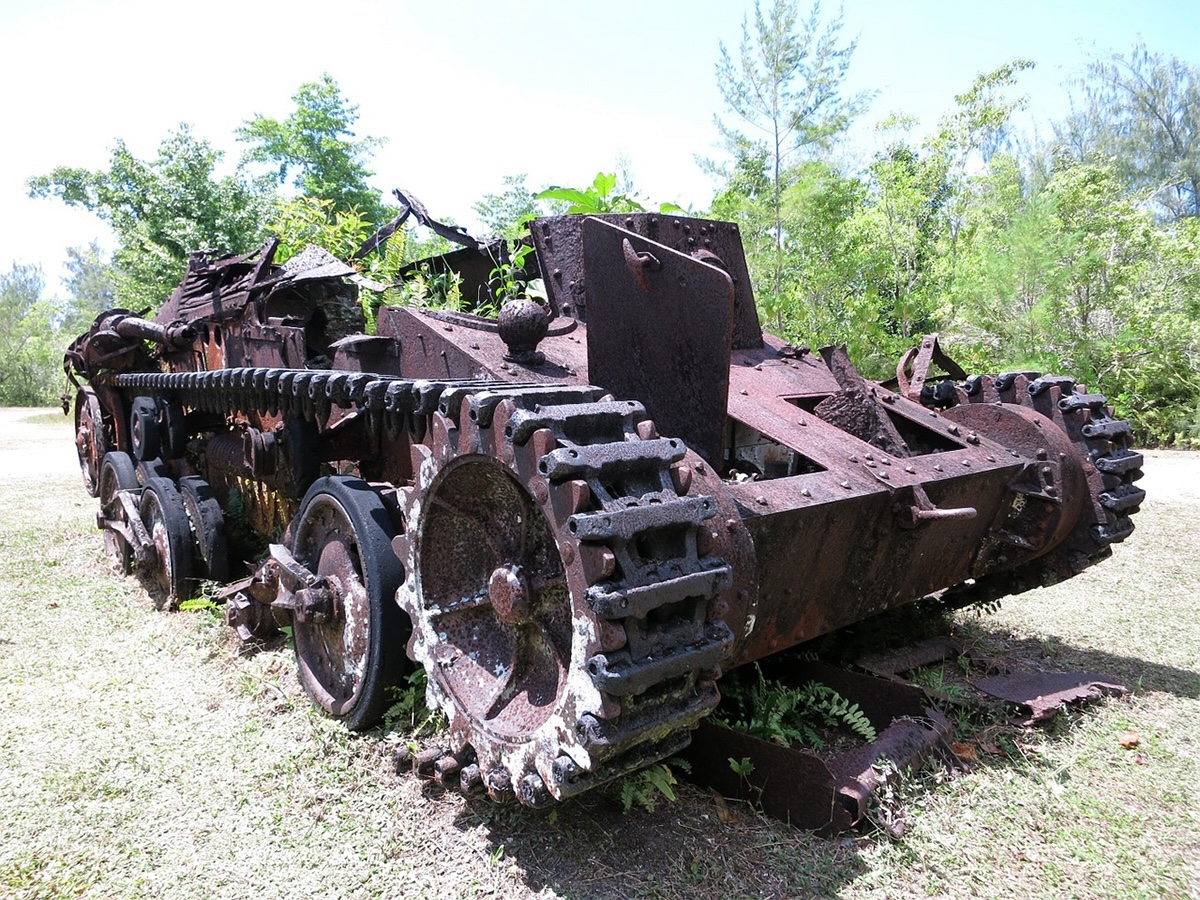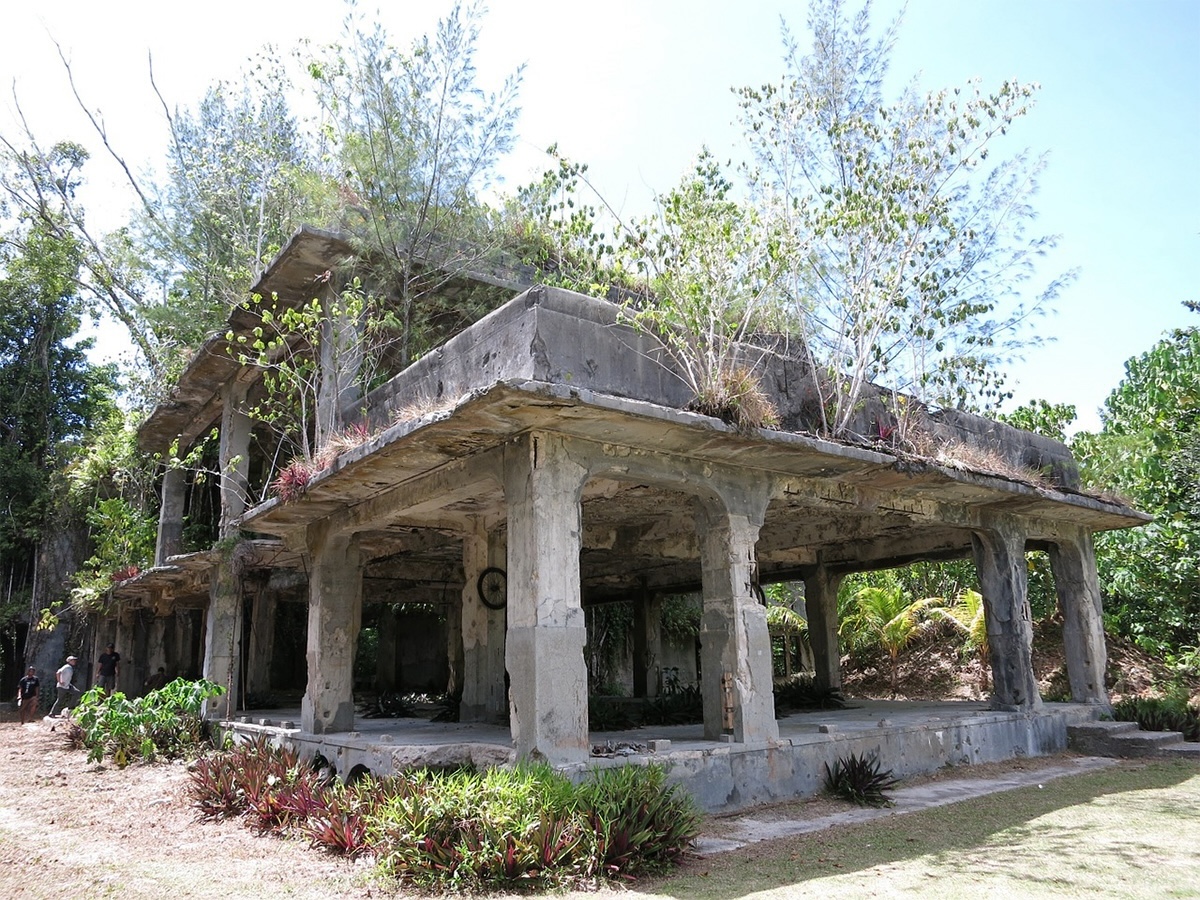Diving in Palau - a magical liveaboard diving trip in Micronesia
Come along to Micronesia and diving in Palau with Liveaboard. It took some time to think because this is a very special diving trip. It is unsafe to fly to Palau with one ticket. If the luggage does not arrive, it is quite difficult to arrange for it. So we chose to fly with double plane tickets. We started by flying to Manila in the Philippines. It is one of the few possible travel routes to get to Palau. Flying via the USA was not an option for us. There would be a lot of stops and take a long time. Some days of the week there may be direct flights but Manila is a real world metropolis but giant malls, big luxury hotels and lots of shopping.
It is possible to have an incredibly pleasant experience in Manila nowadays. Manila is a city rich in contrasts, which itself consists of 16 cities that have grown together into a vibrant metropolis. There are areas you probably shouldn't or don't want to visit as a tourist. There are areas here that are extremely poor and outright slums. But Manila is otherwise really worth a couple of days stopover. A good option to combine diving and liveaboard in Palau with is a few or several days of diving Anilao which is just a few hours south of Manila and offers fantastic diving.
In order to get the flight and all parts of the travel puzzle, we booked with Scuba Travel in Gothenburg who are good at arranging diving trips and liveaboards in Palau. They arranged all flights, transfers and hotel nights that were needed. Unfortunately, not all flights run every day, so it was a bit of a puzzle before we felt satisfied.
First stop in Manila
We booked two nights in Manila for our diving trip to Palau and Micronesia. It was really pleasant to stop there. The holiday became a richer experience and we knew that the luggage came with us all the way. During the day we visited some giant shopping malls and Manila's aquarium. There was plenty of time to rest the body after a long flight and plenty of time to eat good food and get some culture in as well. After our two nights in Manila, it's time to fly to Palau.
We have chosen to go with the non-stop flight that goes a couple of days a week. The alternative is to fly via Guam with a stop on the way. That stop can be a few hours or almost a whole day depending on the day of the week. It also gets extra messy when you have to apply for an American visa if you fly that way. There will be an extra night in Palau on our trip with that choice, but it also felt quite nice.
Palau has no taxis.
We had found out that Palau lacks taxis so luckily we had help to pre-book a transfer. The hotel was staffed and met us and soon we were on our way to our hotel. The next day after breakfast, it's time to go to the liveaboard and we are really charged. We have built up a real craving for diving now and we know that diving in Palau with a liveaboard here in Micronesia in the middle of the Pacific Ocean must be something really extra. Staff from our liveaboard pick us up at the hotel and take us to the boat. Here we are directed to our cabins where we can finally unpack for real and start enjoying warm breezes and dreaming of future experiences.
When everyone is on board, it's time to leave port and anticipation grows even more when we look down into the blue water where corals and fish shimmer below us. On board it is really a mix of divers from all over the world. Half are from the USA, Palau is among the most notorious diving destinations for many from there and many want to come here.
Amazing reefs with lots of shark
Our first dive will be at a reef where it is quite current but also very beautiful. We are let in from our boat where it is only about 10 meters deep and from there we go down and then follow the reef out to a wall that drops straight down. There we drop a bit down to 25-30 metres. The reef here is teeming with marine life, it really is teeming with fish. Shoals of tuna and barracuda out in the blue along the wall, but here we also see snappers and butterfly fish and lots of anthias. Several smaller reef sharks swim below us and it just keeps going. The reef sharks are in their element here and control the reef and there are sharks most everywhere it seems. Most are whitetip reef sharks, but also gray reef sharks and blacktips.
After a while they are sad to say but not so interesting anymore. It's "too many" if that's even possible, but of course it's pure enjoyment. It's not just sharks, we also see a couple of eagle rays flying past us in formation and several different turtles. Several species of fish of every imaginable variety fill the reef and we also find lots of beautiful flatworms and nudibranchs. Hair stars and fungi color and shape the reef and it is a dive of pure pleasure.
Palau is the world's largest protected marine area. The area is actually larger than all of Sweden and the waters here are completely protected from fishing and it has become a haven for marine life. This means that we will see many species of shark in the coming week. They have truly found a paradise here in Palau's glorious waters.
Beautiful
We travel around Palau's archipelago and during the week we dive in many fantastic places. The marine life is simply magnificent and the environments absolutely incredible. The diving here is also exciting from a historical perspective. We travel down a bit south one day to Peleliu. Here stood a protracted battle, Operation Stalemate II, during the Second World War. It was a true war of attrition that lasted from September 15 to November 27, 1944. It is often cited as one of the bitterest battles of the entire war due to the high number of casualties. Peleliu also did not have much strategic importance so the war here so the battle was highly contested.
When we go ashore here, we see a lot of remains from the war. Here, among limestone caves and strange rock formations, there are still lavets and even some weapons remain. They have almost become one with nature over the years. It is with great respect that we go here and share the history, but it is certainly fascinating. Later we will dive at the Orange reef here and there is plenty of munitions here below the surface as well. We see helmets, cartridges, a lot of weapons and remains from landing craft, among other things. Add in lots of fish and invertebrates that have taken this part of history and annexed it all as their home and you have a rather strange but also amazing dive.
We also dive at Peleliu Express – a dive that is exactly what it sounds like, a current dive where the reef hooks get to work. Here we see lots of fish, turtles, Napoleon fish and fantastic corals. Diving here requires some experience or some current diving experience to really enjoy it but anyone can dive here.
More shark and big fish at blue corner
Diving from a liveaboard in Micronesia and Palau without visiting Blue corner is not a real diving trip here. This is a dive site where you can always dive but you should have some experience diving when the tide goes out. If nothing else to get the most out of this dive and feel safe and comfortable. There is a strong current at this location and a reef hook applies here. Most of the diving here takes place from a depth of just under ten meters and sometimes down to +30 meters. When the tide enters the reef here at Blue corner, it brings with it large amounts of clear, yet nutrient-rich water. Here there will be action with lots of big fish and that makes Blue corner in Palau one of the world's most talked about dive sites.
We hang hooked here for just over an hour and the flowing water pulls the body well. We experience giant shoals of barracudas and tuna. During the dive we see gray reef sharks, white-tip reef sharks in abundance and silvertips. Luck is with us and we even get to see a small group of hammerhead sharks, a tiger shark in the distance and the real badass of the sea, the whale shark comes past a couple of turns. Here we also see during our dives marlin and several manta rays. Some really big Napoleon fish are also gliding past at close range. It takes a bit of luck but here at Blue corner you can even experience whales, dolphins, sailfish and other large animals including bull sharks, thresher sharks and even thresher sharks.
Flowing
Blue corner is really stream and stream can change anytime. Be prepared to suddenly be pulled up, to the side, against or with the current or down. It's about being involved and that's why reef hooks are used here but with all the action going on here it's absolutely fantastic. Incidentally, it was on Palau that the reef hook was invented.
During the week we see many big fish but we also dive at some of the wrecks that are here. Marine life has really taken over over the years and the wrecks are now quite clean of detail. After the end of World War II, Japan asked for permission to bring home parts of the wrecks and remains out of respect for families. But also to be able to reuse some materials. This means that the wrecks on Palau are mostly shells, but it is still exciting diving that you can experience here and the marine life has benefited from these artificial reefs.
Today, anemones, gorgonians, sponges, soft and hard corals thrive here and, together with all the fish, it provides fantastic experiences. Snappers, large groupers, Napoleon fish, bumphead parrotfish, butterfly and emperor fish and turtles are often seen here at the wrecks. In addition, lots of smaller species such as various gobies and blennies and lots of invertebrates. When diving on these wrecks it should be done with reverence for all the lives lost here but unfortunately many people still today pick up parts of the wrecks and materials here.
Rock Islands, Jelly Fish lake
Of course we stop at what has become a bit of the image of Palau, the Rock Islands. A group of small islands and depending on who is counting, there are between 250-300 of them. They are located between the main island and Koror and Peleliu. The green-clad limestone cliffs jut out of the sea like an emerald necklace thrown into the sea and against the blue sea, it is a true signature mark of Palau. Who hasn't seen aerial drone footage of these islands? There are about 70 smaller lakes here that are also formed among the islands. One of these lakes is known today to have a large amount of jellyfish. It's jellyfish that don't burn so you can snorkel and experience the hundreds of thousands of jellyfish that are trapped on Eil Malk Island. A distinctly different element of your diving trip.
When you go on diving trips to Palau, it is also possible to book so that your diving takes place with day trips and with accommodation on land. Many of the dive sites are the same as you do from a liveaboard, but of course you will reach far more dive sites when you are on a liveaboard. You can also do many more dives. A detail that may be good to know is that during your diving trip, there may sometimes be long trips with the small boats from the liveaboard. Since you cannot or cannot anchor everywhere, you lie still by the boat and take you around with small boats and it was a bit murky and long on some occasions. It also meant that the number of dives went down to sometimes only three dives per day. Otherwise, the whole thing was a fantastic experience on board with very good service and diving.
Goodbye Palau and on to the next destination
When diving our diving and liveaboard here in Palau in Micronesia is over, it's time to say goodbye. We eat breakfast on board and gather to head for the airport. It has been an absolutely fantastic diving trip with incredibly good diving. If you like photography, it's a paradise here. The opportunities for good photos in the clear blue waters here are fantastic.
For those who want to experience diving in Palau and Micronesia with a liveaboard and travel here, keep in mind that it is a long journey. When you're flying that far anyway, why not combine your trip to Palau with a few more days. Diving trips here are good to combine with, for example Yap, known for its manta rays. Truk Lagoon with its incredible wrecks or and Guam which also has wrecks and good diving. Palau is also excellent for combining one diving trip or liveaboard in the Philippines.















